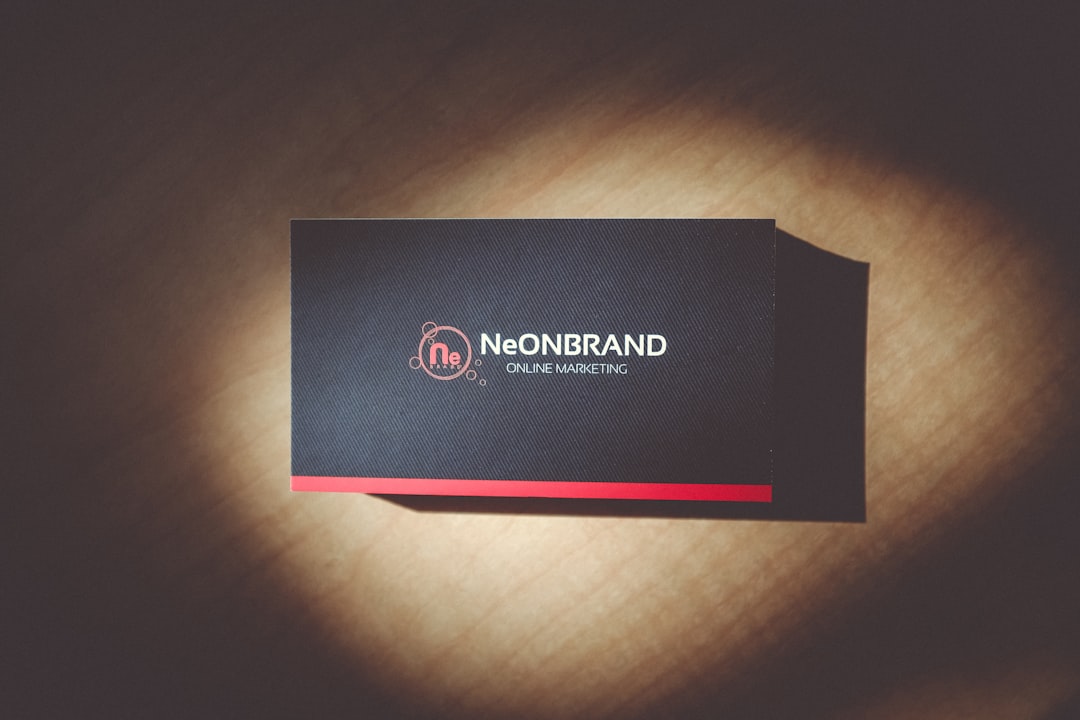As we navigate through the ever-evolving landscape of the professional world, it has become increasingly important to build a personal brand that sets us apart from the crowd. In today’s digital age, building a personal brand can make all the difference in terms of how we are perceived by potential employers, colleagues, and clients.
At its core, a personal brand represents who we are, what we stand for, and what we can offer to the world. It is a culmination of our skills, experiences, values, and personality traits that make us unique. Building a strong personal brand can help us establish credibility, showcase our expertise, and differentiate ourselves from others in our field.
In this blog post, we will explore the key elements of building a personal brand, from defining your unique value proposition to cultivating your reputation and expertise. We will provide practical tips and strategies to help you establish a strong online presence, create a consistent visual identity, and build a network of collaborators that can help you achieve your professional goals.
Whether you are just starting out in your career or looking to take your personal brand to the next level, this post will provide you with the tools and resources you need to succeed. So, let’s dive in and explore the world of personal branding together!
Defining Your Unique Value Proposition
Defining your unique value proposition (UVP) is the foundation of building a strong personal brand. It’s the reason people should choose you over anyone else in your industry. Your UVP should be a clear, concise statement that communicates the value you bring to the table.
To define your UVP, start by asking yourself a few questions:
– What are my unique skills and strengths?
– What makes me different from others in my industry?
– What problems can I solve for my target audience?
Once you have a clear understanding of your UVP, you can use it as a guiding principle for your personal brand. Everything from your messaging to your visual identity should reflect your UVP.
Your UVP should also be communicated in a way that resonates with your target audience. Think about the specific pain points and challenges they face, and how you can position yourself as the solution to their problems.
Remember, your UVP should be authentic and genuine. Don’t try to be something you’re not, or you’ll risk coming across as inauthentic. Instead, focus on highlighting your unique strengths and skills in a way that is true to who you are.
Defining your UVP is just the first step in building a strong personal brand. In the next section, we’ll talk about establishing your online presence and how it can help you reach your personal branding goals.
Once you have a clear understanding of your UVP, you can use it as a guiding principle for your personal brand.
Establish Your Online Presence
In today’s digital age, having a strong online presence is crucial for building a personal brand. Your online presence acts as your digital footprint and is often the first impression people have of you. Therefore, it is important to establish a strong and consistent online presence that accurately represents who you are and what you stand for.
The first step in establishing your online presence is to create a personal website or blog. This allows you to have complete control over your online presence and showcase your unique value proposition. Your website should include your bio, professional experience, portfolio or examples of your work, and any other relevant information that sets you apart from others in your field.
In addition to having a personal website, it is important to be active on social media platforms. LinkedIn, Twitter, and Instagram are great places to start. On these platforms, you can share content related to your industry, engage with others in your field, and showcase your expertise. It is important to keep your profiles consistent with your personal brand and ensure that your messaging is in line with your unique value proposition.
Another way to establish your online presence is through guest blogging or contributing to industry publications. This not only helps to establish you as an expert in your field but also allows you to reach a wider audience and gain valuable exposure.
Lastly, it is important to monitor your online presence regularly. This includes regularly updating your website and social media profiles, engaging with your audience, and responding to any comments or reviews. By doing so, you can ensure that your online presence accurately reflects who you are and what you stand for.
Overall, establishing a strong online presence is crucial for building a personal brand in today’s digital age. By creating a personal website, being active on social media, contributing to industry publications, and monitoring your online presence, you can create a consistent and authentic personal brand that sets you apart from others in your field.
Overall, establishing a strong online presence is crucial for building a personal brand in today’s digital age.
Create a Consistent Visual Identity
When it comes to building a personal brand, it’s important to not only establish your online presence and define your unique value proposition, but also to create a consistent visual identity. This includes everything from the colors and fonts you use to the images and graphics associated with your brand.
Why is a consistent visual identity important? For starters, it helps to establish brand recognition. When someone sees a certain color or design associated with your personal brand, they should immediately think of you. It also helps to create a sense of professionalism and credibility, which is especially important if you’re looking to establish yourself as an expert in your field.
So how do you create a consistent visual identity? Start by choosing a color palette that reflects your personal brand and sticking to it across all of your online and offline channels. This could include your website, social media profiles, business cards, and any other materials associated with your personal brand.
Next, choose fonts that complement your color palette and use them consistently across all of your materials. This will help to create a cohesive look and feel that is instantly recognizable as your personal brand.
Finally, consider using images and graphics that reflect your personal brand and are consistent with your overall visual identity. This could include a logo, a headshot, or other images that help to establish your brand’s personality and style.
Remember, creating a consistent visual identity takes time and effort, but it’s an essential part of building a strong personal brand. By establishing a clear and consistent look and feel for your brand, you’ll be well on your way to standing out in your industry and achieving your professional goals.
This could include your website, social media profiles, business cards, and any other materials associated with your personal brand.
Build Your Network and Collaborate
Networking and collaboration are essential components of building a successful personal brand. Your network is your net worth, and your ability to collaborate with others can lead to new opportunities and increased visibility. Here are some tips for building your network and collaborating with others:
1. Attend Industry Events: Attend industry events, conferences, and seminars to meet new people and learn about the latest trends and practices in your field. These events provide opportunities to network with like-minded individuals and potential collaborators.
2. Connect with Others on Social Media: Social media is a powerful tool for networking and collaborating with others. Connect with individuals in your industry on social media platforms such as LinkedIn, Twitter, and Instagram. Engage with their content, share your own, and start conversations.
3. Join Professional Organizations: Joining professional organizations and associations is an excellent way to network with others and gain access to valuable resources and opportunities. Many of these organizations offer networking events, educational programs, and other benefits to their members.
4. Collaborate with Others: Collaboration can lead to increased exposure and new opportunities. Look for opportunities to collaborate with others in your field, such as co-authoring blog posts or articles, hosting webinars or podcasts, or working on joint projects.
5. Provide Value to Others: Networking and collaboration are not just about what you can get; they are also about what you can give. Provide value to others by sharing your knowledge, skills, and resources. This can help you build stronger relationships and increase your credibility and reputation within your industry.
Building your network and collaborating with others are critical components of building a successful personal brand. By attending industry events, connecting with others on social media, joining professional organizations, collaborating with others, and providing value to others, you can expand your network, increase your visibility, and achieve your goals.
Look for opportunities to collaborate with others in your field, such as co-authoring blog posts or articles, hosting webinars or podcasts, or working on joint projects.
Cultivate Your Reputation and Expertise
Building a personal brand isn’t just about creating a visual identity or having a strong online presence. It’s also about cultivating your reputation and expertise in your field. This is where your unique value proposition comes into play. You need to demonstrate your expertise and prove to your audience that you are the go-to person in your niche.
One way to do this is by consistently creating high-quality content that showcases your knowledge and skills. Whether it’s through blog posts, videos, or social media updates, you need to provide value to your audience and position yourself as an authority in your field.
Another way to cultivate your reputation is by building relationships with other experts in your industry. Collaborating with others can help you expand your reach and gain new insights into your niche. This can lead to new opportunities and help you stay up-to-date with the latest trends and best practices.
You should also make an effort to engage with your audience and respond to their questions and comments. This shows that you are invested in their success and are willing to help them achieve their goals. It also helps you build trust and credibility, which are essential components of a strong personal brand.
Finally, don’t be afraid to seek out feedback and constructive criticism. This can help you identify areas where you can improve and grow as an expert in your field. It also shows that you are committed to continuous learning and development, which is a hallmark of successful personal brands.
In summary, cultivating your reputation and expertise is a critical part of building a strong personal brand. By providing value to your audience, building relationships with other experts, and seeking out feedback, you can position yourself as a trusted authority in your niche and achieve long-term success.
It also helps you build trust and credibility, which are essential components of a strong personal brand.
Conclusion: Continuously Evolve and Refine Your Personal Brand
Congratulations on taking the initiative to build your personal brand! By following the steps outlined in this blog post, you are well on your way to establishing a strong and memorable online presence that accurately reflects your unique value proposition.
However, it’s important to remember that building a personal brand is an ongoing process. You should continuously evolve and refine your brand as you gain new skills, experiences, and insights. This will help you to stay relevant and competitive in your industry, and to attract new opportunities and collaborations.
Here are some tips for evolving and refining your personal brand over time:
1. Stay up-to-date with industry trends and best practices.
2. Seek out feedback from colleagues, mentors, and peers.
3. Continuously improve your skills and knowledge through training and education.
4. Stay active on social media and other online platforms to keep your brand fresh and engaging.
5. Embrace new technologies and tools that can help you to communicate your brand message more effectively.
Remember, building a personal brand is an investment in your future success. By consistently refining and evolving your brand over time, you can increase your visibility, credibility, and influence in your industry, and open up new opportunities for growth and advancement.
So, take the time to assess your personal brand regularly, and make the necessary adjustments to stay on top of your game. With dedication and perseverance, you can build a personal brand that truly represents who you are and what you have to offer. Good luck!





